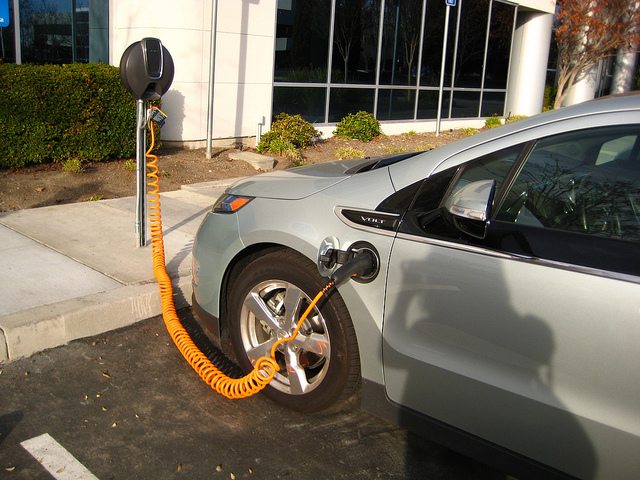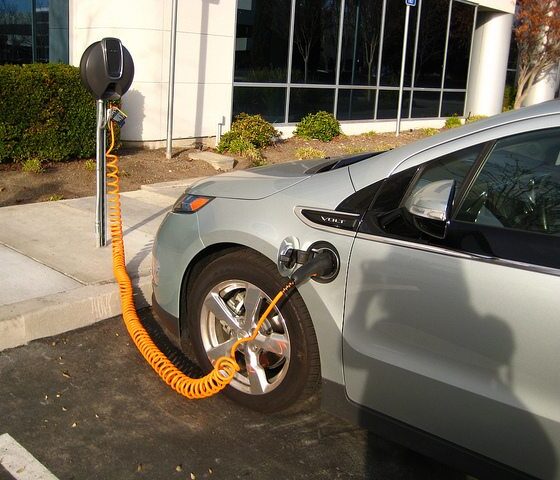

Features
Together in Electric Dreams?
The UK government has extended its financial support for electric vehicles by a further £500m, which is likely to accelerate the steady growth in this sector. Yet investors looking for low-risk growth should also consider the broader theme of vehicle efficiency, says Ben Goldsmith.
A new, futuristic-looking car has appeared on London’s streets. It is the Vauxhall Ampera, called the Chevrolet Volt in the USA, an electric-powered family saloon, which uses an on-board 1.4 litre petrol engine to recharge its batteries. The result is a usable car – 0-60 in ten seconds and around a 300 mile range – which can achieve over 100 miles per gallon.
Cramming a hatchback-sized engine, an electric generator, batteries and an electric motor into one car may seem the opposite of efficient, but doing so reveals two key truths about cars and energy. First, electricity is a more efficient medium than petrol for managing power around a car. It can be generated while braking, and dispenses with the need for the heavy gearbox needed for internal combustion engines. Secondly, recharging electric cars presents challenges; hence General Motors’ decision to generate electricity on board. The Ampera is a clever piece of systems integration. It also says a great deal about where the personal transport sector stands in 2014 – so much so that it is easy to imagine it as a museum piece of the future. Its design has a fully-electric power train for efficiency but recognises petrol as the most economical and portable underlying energy source.
So is the Ampera ‘just another hybrid?’ The answer is no. In our automotive museum of the future, the preceding exhibit would be the Toyota Prius, first released in Europe in 2001. The Prius – which became a runaway success and is still a top seller for Toyota – is essentially an internal combustion engine car which uses a battery to extend range. The Ampera is the opposite, which is a big difference; and it was awarded 8/10 by the UK’s demanding Top Gear magazine, which is a bigger one.
Pure-play electric cars – those without range extenders – are also appearing. These include the Nissan Leaf with its quoted 80-mile range and the BMW i3 with a similar range, although it also comes in a range extended model. Of these, the i3 is the more radical. It is a root and branch electric car, drawing on a BMW development programme that started with the electric Mini E of 2009. The i3 is built for lightness with a carbon-fibre body, and it is tipped for success by the UK motoring press.
Sales of these cars are supported in the UK by a buyer subsidy of £5,000. This forms part of a broader system of support, including free recharging points in urban centres, which recently received a further £500m commitment from central government. Although this should further boost the steady growth in this market, these vehicles still represent a small (though growing)
proportion of overall sales for established carmakers.
In the UK, 1,200 grant-eligible vehicles were registered in March 2014[i]; while in the US, the equivalent figure was just under 5,000 [ii]. Consumer constraints include ‘range anxiety’ (hence the introduction of extenders), lack of charging infrastructure (although some retailers like Ikea have seen an opportunity to offer this as a perk to visiting customers) and, ultimately, cost. The Ampera and i3 are both around £30,000, which could easily buy a fast, frugal German sports saloon. And yet some markets are proving to be front-runners in the adoption of electric cars – in Norway, for example, around a fifth of new vehicles registered are electric.
So how ought investors to get exposure to this fast moving theme? Automotive majors are not an option, given the small proportion of their business devoted to electric vehicles and the narrowing profitability many face on their traditional lines (not surprising, given that the value chain of car manufacturing and distribution has hardly changed since Henry Ford). The one large, pure-play electric car manufacturer is Tesla. It is selling over a thousand units of the Model S in the US every month, a car which has received extremely positive reviews in the petrol-loving US motoring press.
Investor demand is currently outstripping the supply of the company’s shares, resulting in an eye-popping $30bn valuation or 135 times expected earnings this year. This market capitalisation may represent a broader vote of confidence in the future growth of the market, especially now that Tesla expects to produce batteries for other car manufacturers. Tesla’s founder, Elon Musk, is living proof that one visionary entrepreneur can transform a market – he is nothing short of a modern-day Thomas Edison.
As far as batteries go, fears over raw materials constraints – of lithium, for example – appear to have eased. New supply has come on stream and more plentiful alternatives are emerging, while institutes such as MIT regularly post new research updates. However, as is often the case with scale and cost reduction challenges, China is likely to hold the key. It has been China’s vast investment in solar photovoltaic manufacturing that has given the world competitive, ever cheaper solar power.
Feeling unable to overtake the West and Japan on internal combustion engines, Chinese companies are investing heavily in battery technologies. This should provide a boost to the electric vehicle market. In 2009, our private equity team at WHEB made an investment predicated in part on future price reductions in batteries, which has since proved correct. The team backed electric outboard motor manufacturer, Torqeedo, which has now benefited from battery price reductions to increase the power output of its largest unit tenfold to 80 HP – now the most powerful commercially available outboard electric boat engine.
And yet, as with any emerging sector, there is risk. Better Place, a well-backed Israeli start-up with the breakthrough idea of a network of ‘battery stations’ at which drivers could change one leased battery in a matter of seconds for a fully recharged replacement, went bust last year. For those looking for thematic growth coupled with lower risk, a better mindset may be to replace the words ‘electric cars’ with the less catchy ‘vehicle efficiency sector’.
Urged on by increasing fuel-efficiency regulations (the EU’s latest standard calls for companies to reduce emissions to 95g/km across the EU car fleet by 2021) and by the demands of consumers suffering from high fuel prices, car makers are competing intensely on miles per gallon. Even in the U.S, where fuel is cheaper than in Europe, over a third of motorists list fuel efficiency as a top factor in choosing a car. The result is a great stimulus to automotive supply chain companies focusing on delivering this outcome for large carmakers. ‘Stop-Start’ technology, which saves fuels and cuts down on urban pollution while paying for its upfront cost in a year, is now widespread.
There is also a multitude of more complex solutions, such as thermal management, ‘lightweighting’, and engine cooling. WHEB’s listed equities team owns US-based Borg Warner, which achieved sales of $7.4bn in this market in 2013, in the portfolio of the FP WHEB Sustainability Fund. Investors in search of an environment for accelerated take-up of pure battery electric vehicles should look, for the moment, to niche users with predictable journey patterns. These include urban car clubs, taxis and local vehicle fleets.
A reminder of the suitability of electric power for such uses is provided by the humble milk float – probably the first electric vehicle seen by many of us. Although such vehicles may become obsolete through the changing face of retail, it is likely that after much refinement, similar technology will one day dominate the roads.
Ben Goldsmith is a partner at WHEB Asset Management. For a fully referenced version of this article, see WHEB’s blog, where it originally appeared.
Photo: the rabbit via Flickr
Further reading:
UK hybrid and electric car registrations up 17.5% in a year
Electric car sales in the UK reach record high
Ecotricity launches 1,000 miles discount tariff for electric car drivers
Electric vehicles in UK could reach 5 million with right polices, says National Grid
Electric cars clock up half a million miles on Ecotricity’s Electric Highway


 Environment10 months ago
Environment10 months agoAre Polymer Banknotes: an Eco-Friendly Trend or a Groundswell?

 Environment11 months ago
Environment11 months agoEco-Friendly Home Improvements: Top 7 Upgrades for 2025

 Features9 months ago
Features9 months agoEco-Friendly Cryptocurrencies: Sustainable Investment Choices

 Features10 months ago
Features10 months agoEco-Friendly Crypto Traders Must Find the Right Exchange





























